Sustainable, high performance and finished with the signature javelin tip.
Over The Air (OTA) Testing / Near Field testing / Compact Antenna Test Ranges
You will need an EM absorber sooner then you probably think. Whether it’s your phone, your car, your watch, your lawnmower or even your thermostat, there is a connected and ‘smart’ version of nearly everything you can think of. All of these devices emit some degree of electromagnetic radiation. The fact that this incredible array of devices (that are in use in cities, neighborhoods and streets around the world) can function simultaneously and without causing interference with vital infrastructure is thanks to international regulations governing these emissions. Necessarily, this means that if you’re in the business of designing new consumer electronics, commercial or military hardware, you need a facility to determine whether the emissions generated by your product fall within the guidelines set by the various emissions standards. This is where EM absorbers and (semi) anechoic chambers for EMC testing come in.
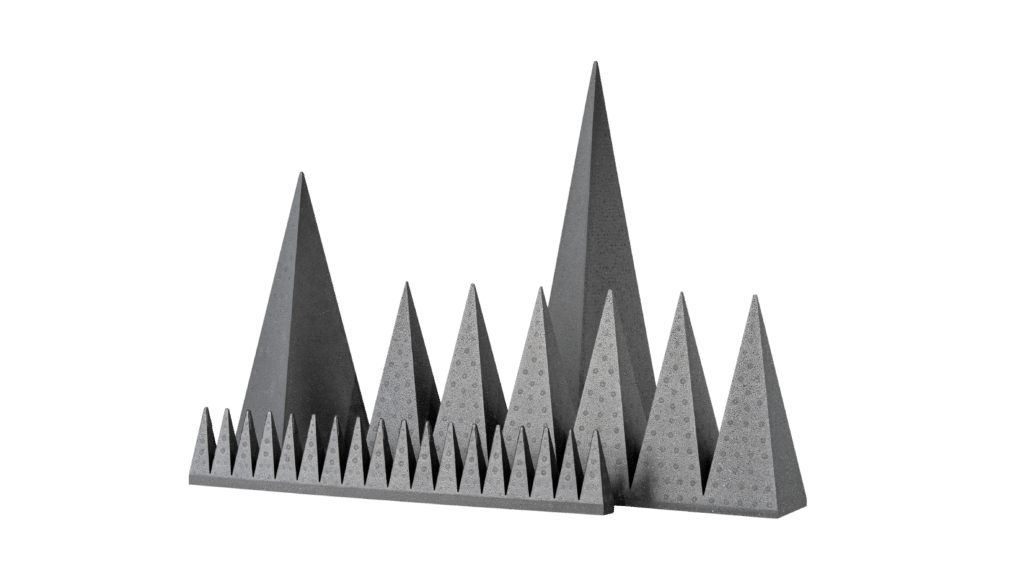

An EM absorber can be made from polystyrene, polyethylene or polypropylene foams and is designed to absorb radiation (in the form of high frequency signals) into heat, thus preventing the radiation from bouncing around the chamber in which the equipment is being tested. There are different types of electromagnetic absorbers (hybrid or microwave absorbers being the most important ones), but the principle is largely the same: the EM absorbers are tuned to provide sufficient attenuation of the signal in a range where you plan on doing the most of your testing. This allows you to determine with great precision whether the technology you’re developing complies with international standards since there is neither outside interference nor excessive reflection of the signal on the interior of the chamber.
Closed-cell structure means no leakage of carbon particles
Stable absorption / performance due to uniform carbon cell loading
Damaged pyramids are easily replaced thanks to a modular design
Easy installation with simple screws and mounting strips (no adhesives required)
Highly rigid and lightweight (no deforming over time)
Non-hygroscopic (resistant to humidity)
No hazardous materials: compliant with REACH & RoHS
Certified for use in clean room environments
Operating frequency starting at 200 MHz up to 50 GHz
Available in the following product height:
1200 by 600mm baseplate
Available walkway absorber models to allow test setup access in chambers with complete floor absorber coverage
Assured to last 25+ years
Fire retardant in accordance with international standards
Absorbers capable of attenuating electromagnetic radiation come in a variety of shapes and sizes including pyramids, sheets, wedges, tiles and more intricate designs. The one most commonly used is the pyramidal EM absorber due to its reliable performance for popular frequencies. Performance in this case is quantified in decibels (dB). As we’ve pointed out, EM absorbers can be constructed using a variety of materials, each with its own advantages and disadvantages. Read the following entry to discover more about foam and polystyrene absorbers.
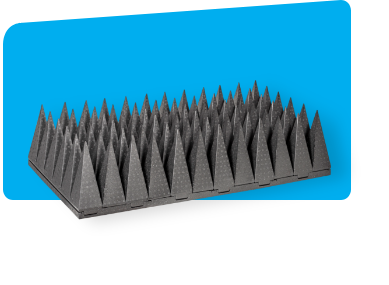

This 5-inch (13cm) absorber is specifically designed for smaller wireless antenna test setups, like OTA boxes or cabinets. The operating frequency is 2GHz up to 110GHz.
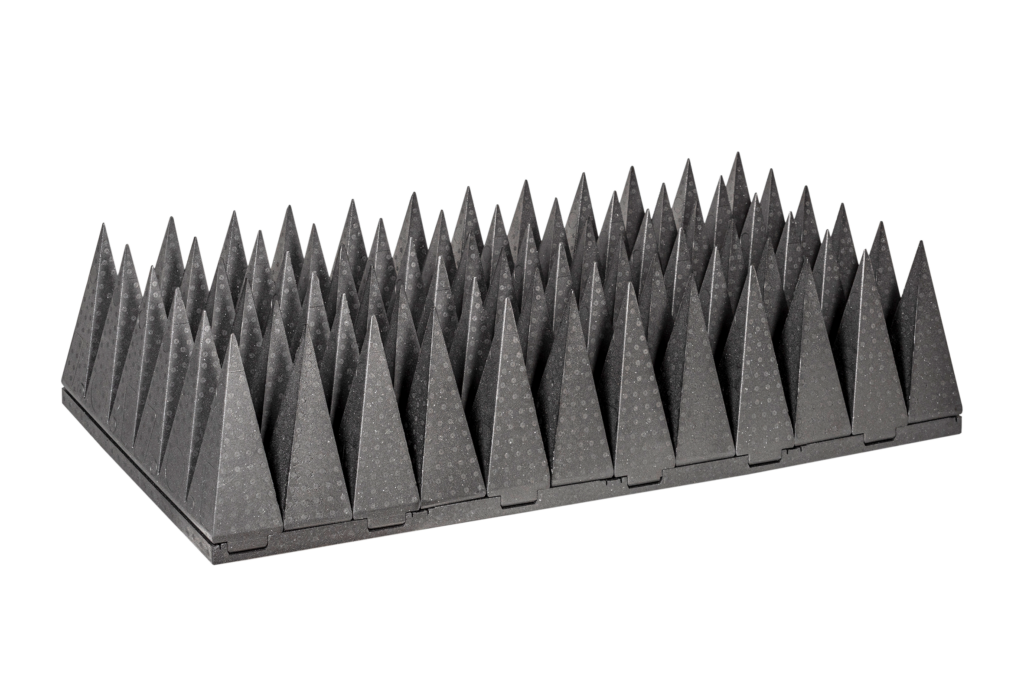
With a total height of 12-inch (30cm) this microwave absorber’ reflectivity performance is outstanding. Among other USP’s, DMAS absorbers are made of expanded polystyrene (EPS) and come with great benefits over traditional foams.
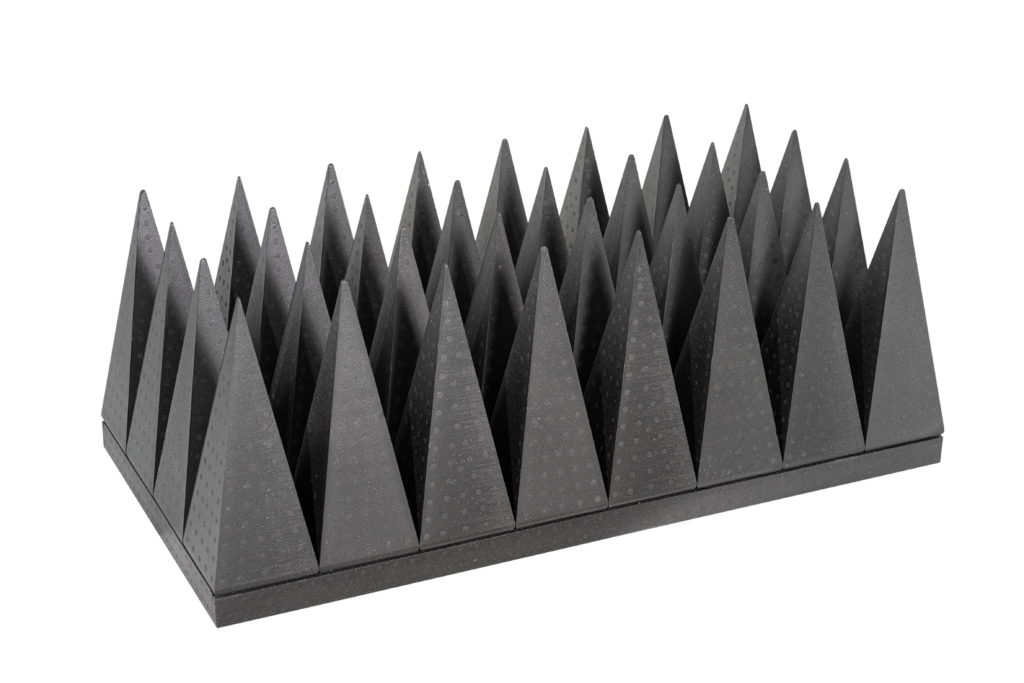
Introducing the MT45-JT (18”) absorber: a long-lasting, javelin-tipped, polystyrene absorber. Among other USP’s, DMAS absorbers are humidity resistant and made of closed-cell material. This provides great benefits over traditional foam materials, such as no leakage of carbon particles.
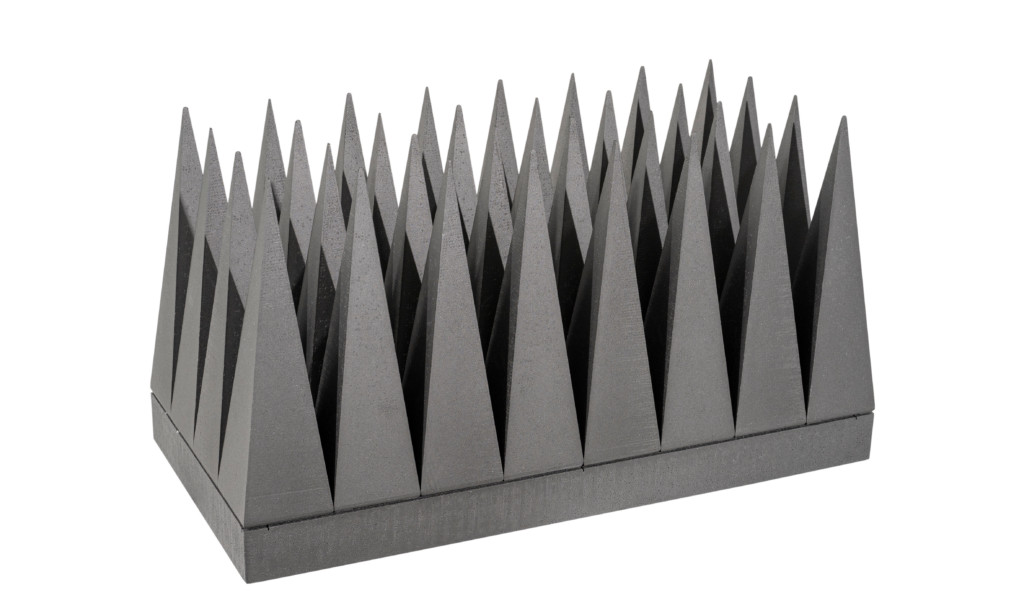
The tallest DMAS absorber is the MT65-JT. This 26-inch absorber is designed for measurements at very low frequencies. Its operating frequency starts at 200MHz. Among other USP’s, DMAS absorbers are lightweight and easy to install. (Adhesive-free installations)
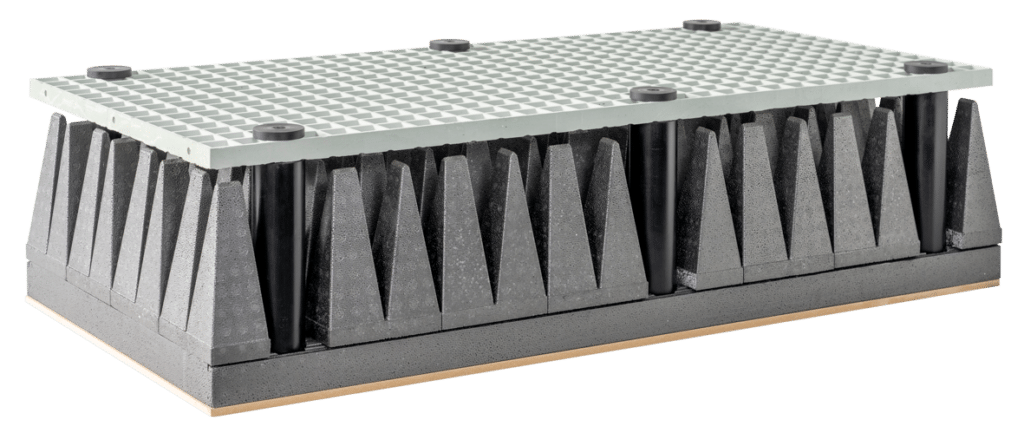
Need quick access to your antenna or Device Under Test (DUT)? Tired of getting first the floor absorbers out of the way before you can make adjustments in your setup? With DMAS walkway absorbers you have an immediate pathway available.
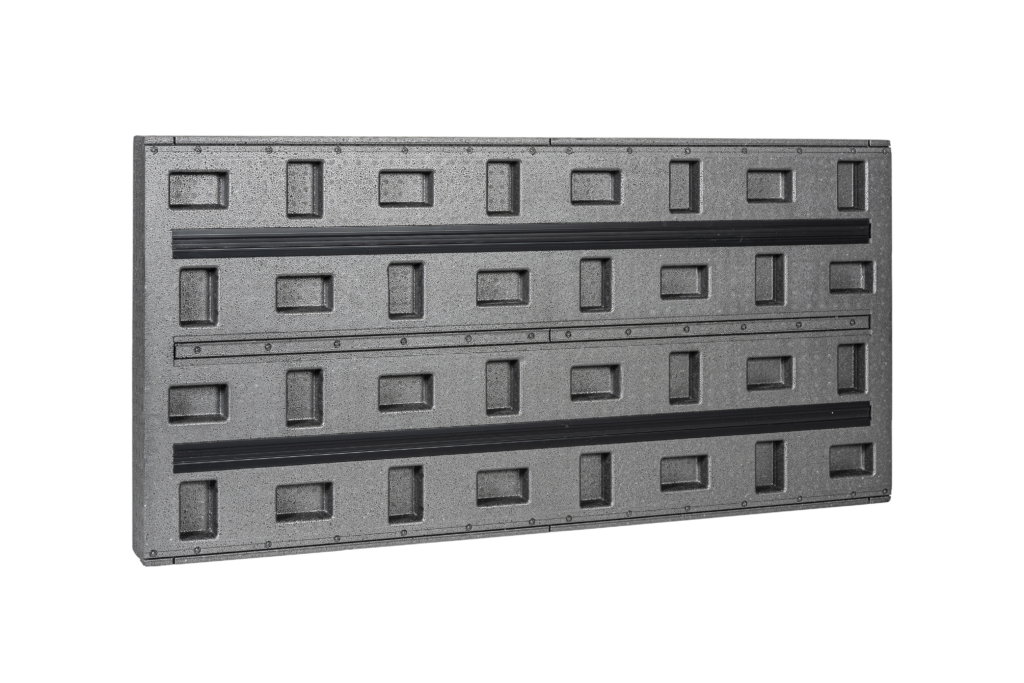
In addition to a great product, we provide the advice you need to achieve the best results. Feel free to turn to us for expert technical advice. Questions are answered within 24 hours.
DMAS polystyrene absorbers are designed and manufactured in The Netherlands to ensure the highest levels of quality.
DMAS enjoys a close collaboration with Comtest Engineering, one of the foremost suppliers of anechoic chamber solutions. Together, we have over 45 years of experience in the field.
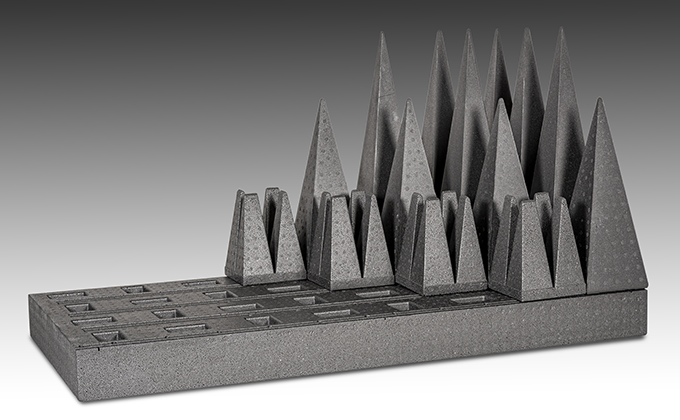
Consisting of 3 unique models, this overview shows all available pyramid configurations for our microwave absorbers, featuring our latest Javelin Tip (JT) innovations.
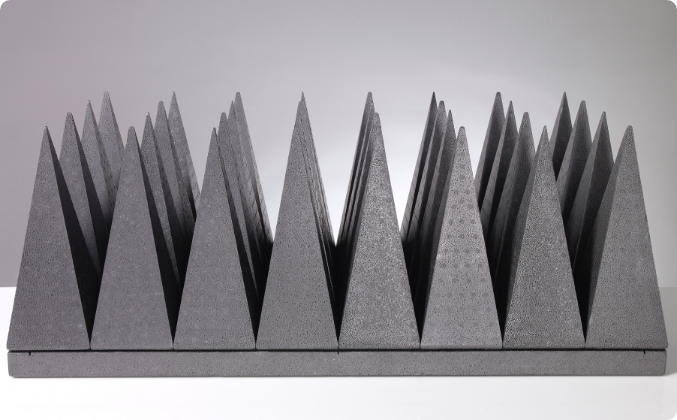
Javelin Tip (JT) absorbers are DMAS’ latest innovation. The sharp tip ensures outstanding performance at microwave frequencies matching traditional foam solutions.
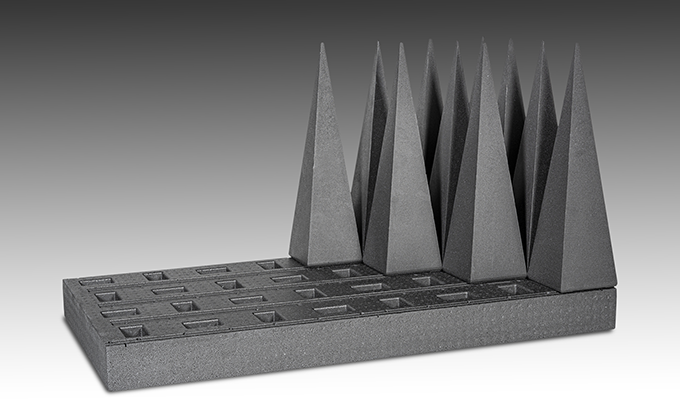
With its recognizable Javelin Tip, this is our largest microwave absorber with total height of 650mm (26″) and operating frequency starting at 200MHz.
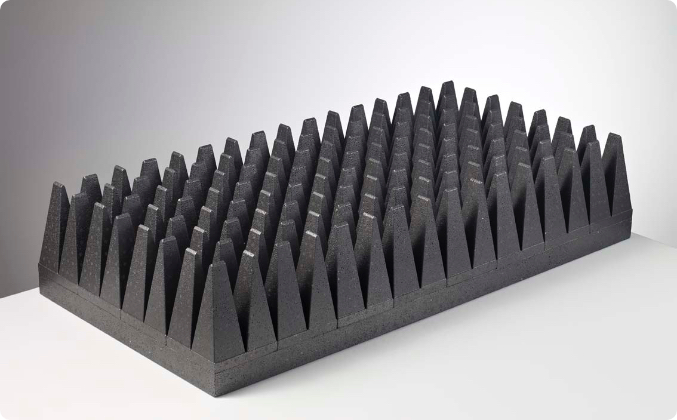
The MT25 model is our lowest absorber and is used in compact testing setups like wireless test chambers, also known as Over-The-Air (OTA) testing.

Robust design to provide safe and easy test setup access in full anechoic chambers with floor absorber coverage.
DMAS EM absorbers represent the latest in performance & durability to make them a perfect fit for modern testing facilities. Contact us today to get started!
Dutch Microwave Absorber Solutions bv
Hoge Rijndijk 205
2382AL, Zoeterwoude
The Netherlands
+31 (0)71 542 1880
© 2025 | Dutch Microwave Absorber Solutions bv
Hoge Rijndijk 205
2382AL, Zoeterwoude
The Netherlands
+31 (0)71 542 1880
info@dmas.eu
We use cookies to improve your experience on our website, to be able to provide social media services and to analyse our web traffic.